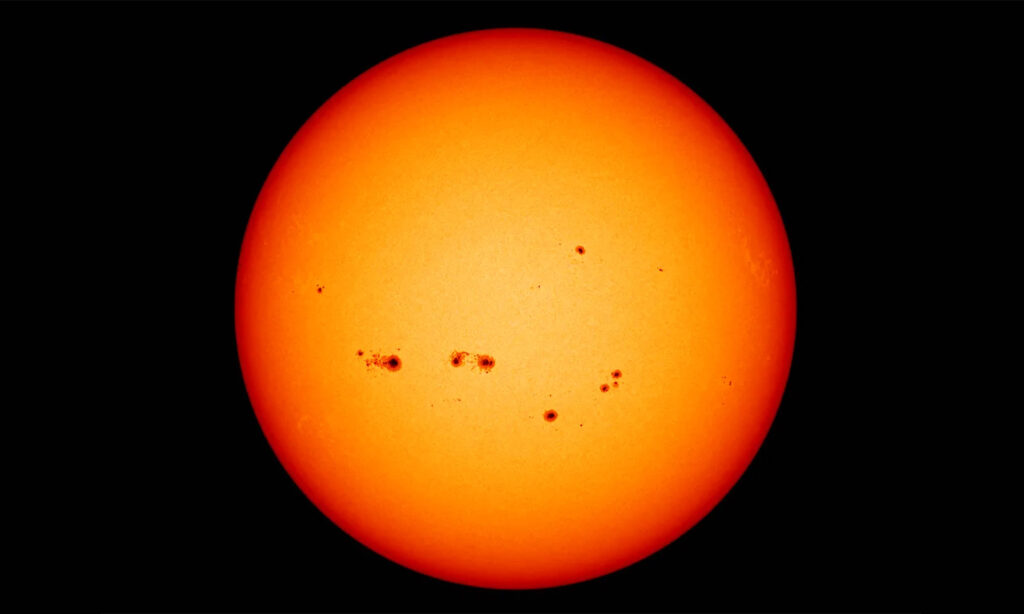The SDO observatory has photographed several hundred visible sunspots on the Sun. This is a record value for at least the last twenty years.

Sunspots are areas of the photosphere that look darker than the surrounding surface. They arise as a result of perturbations of some parts of the Sun’s magnetic field. When the force lines “burst” through the photosphere into the corona region, they suppress the motion of matter, preventing the transfer of energy from the inner regions to the outside. As a result, the temperature in these places drops by about 1500 degrees and they look darker to us than the rest of the Sun’s surface.
Sunspots are directly related to the Sun’s activity. When it is minimal, there may be no dark spots on the entire solar surface. When it reaches its maximum, the Sun is covered with a large number of spots. They produce flares and coronal mass ejections — when those reach Earth, they cause geomagnetic storms and auroras.
Now the Sun has reached the maximum of the next 11-year cycle of its activity. It has markedly exceeded the expectations of scientists. For example, solar flares in May led to the most powerful geomagnetic storm in the 21st century. And on August 8, the SDO observatory photographed the largest number of sunspots in recent years. According to the preliminary estimate of the Space Weather Prediction Center, their number was 337. The last time such a large number of sunspots was observed on the Sun in March 2001.
However, this is still a preliminary estimate. The data is still being processed — official statistics will be published at the end of the month. Scientists at the Solar Influence Data Center of the Royal Observatory in Belgium have counted 299 spots so far. This is the highest since July 2002.
Earlier we told you about how an increase in solar activity caused NASA’s telescope to shut down.
According to Space.com


